Welding is the fabrication process of joining two parts together through heat, pressure, or a combination of both. Professionals and engineering enthusiasts worldwide use welding in a variety of techniques to transform metal pieces, wood, and plastic parts into unique shapes and designs.
This process is more than joining two different materials or objects together, rather, it is an art form that requires consistent practice and skill to master. With the right equipment and commitment, you can create true masterpieces.
Over 30 different types of welding exist, each with its unique process. Some types of welding use simpler processes such as oxy-fuel, while other welding types require high-tech, complicated processes.
We’ve outlined the four main types of welding in addition to a variety of other welding techniques to help you better understand its intricacies and uses.
GMAW – Gas Metal Arc Welding (MIG)
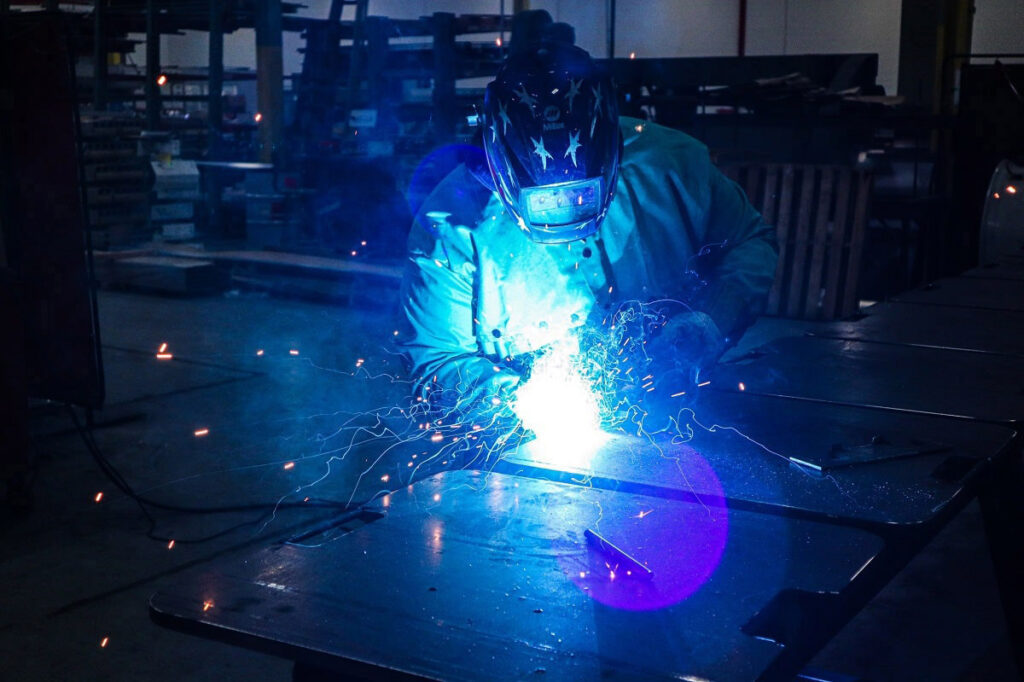
One of the four main types of welding is gas metal arc welding, also referred to as inert metal gas (MIG). In this type of welding, the source of heat is an arc that forms between the workpiece and the consumable metal electrode. As a result, the workpiece metal(s) are heated, and they fuse. Argon and helium are typically used when welding non-ferrous materials through this process.
In addition to the wire electrode, there is a shielding gas that travels through the welding gun to protect the process from atmospheric contamination.
Process
In most gas metal arc welding systems, a direct current ( power source is most commonly used, however, it is still possible to use both direct current (dc)systems and alternating current (ac) can also be used.
The GMAW process can be both semi-automatic or automatic. The power source controls the wire feed rate and the arc length, however, the specific position of the wire and the wire travel speed is controlled by the user.
For What Is It Used?
Generally, MIG welding is used for smaller, low-volume work, such as for fabricating small structures. This welding technique is used for thin sheet and thick section components and is suitable for manual welding that takes place in and around factories.
Advantages and Disadvantages
There are both advantages and disadvantages to using this type of welding. Some potential advantages include:
- With its high operating factor and deposition rate results, this type of welding has significant potential to improve productivity for your business’s operational needs.
- Welds completed using this method are high-quality, so you can be sure that the products created as a result will last.
- A very clean welding process.
- Because there is no influx being used, there isn’t any chance of slag being trapped in the weld metal.
- The shielding gas helps to protect the arc, resulting in a minimal loss of alloying elements in addition to insignificant weld spatter.
There are some disadvantages to using metal in gas welding, such as:
- The particular equipment typically used during this type of welding can be complicated and expensive.
- High sensitivity to contaminants such as rust, oil, dirt, paint, and mill scale. These particles can lead to issues such as cracking, low-quality bead appearance, incomplete fusion, or porosity.
- Not ideal for use in open fields or places where the wind can blow.
GTAW – Gas Tungsten Arc Welding (TIG)
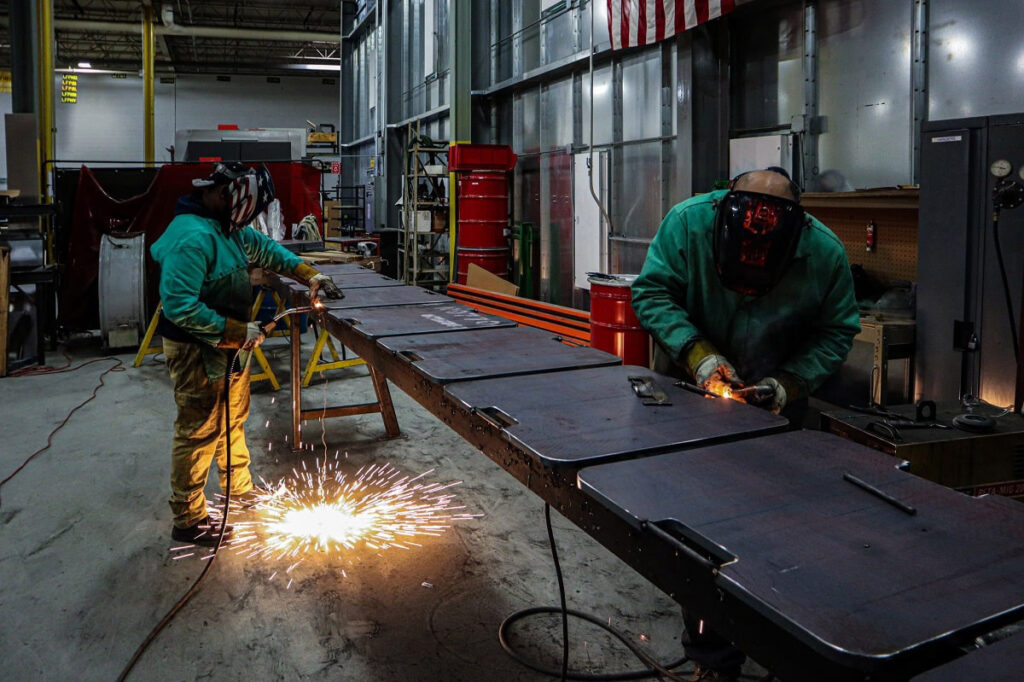
Gas tungsten arc welding, also referred to as tungsten inert gas (TIG) welding, is an electric arc welding process that produces an arc between a non-consumable electrode and the piece being welded.
Process
In this type of welding, a shielding gas forms a protective envelope around the weld area to help protect the weld. An inert gas such as argon or helium helps protect the area from contamination.
The process of gas tungsten arc welding is versatile, as it can be used on both ferrous and non-ferrous metals. Depending on the base metal, it can be used in all welding positions.
The process is used to weld thick and thin materials that either may or may not have a filler metal present, although, in the majority of applications, fillers are required.
For What Is It Used?
In most applications, gas tungsten arc welding is used for welding stainless steel and non-ferrous materials, including magnesium and aluminum. However, it can also be applied to nearly any metal type successfully except for zinc and its alloys.
The aerospace industry was the first to lean into GTAW welding, but it is also used to help manufacture and repair bicycles and in the ship-fitting trade.
Advantages and Disadvantages
Advantages of using this type of welding include:
- Despite it being time-consuming to master compared with other welding methods, it produces strong and high-quality welds for a variety of materials.
- Ideal to use in designs that have curves or intricate details, making it especially ideal for products that need an attractive exterior appearance.
- Suitable for both thin and thick metals.
- Wide variety of uses, including metals such as steel, nickel, bronze, copper, magnesium, aluminum, and gold.
- Doesn’t produce sparks and minimal amounts of smoke or fumes.
Some disadvantages of the GTAW process include:
- It is generally considered the most difficult welding method to master. Operators need to be highly skilled to successfully and safely conduct this type of welding.
- It requires low travel speeds and has a lower deposition rate compared to other types of welding, resulting in a higher cost.
- Not easily automated, requires a manual application.
SMAW – Shielded Metal Arc Welding (Stick)
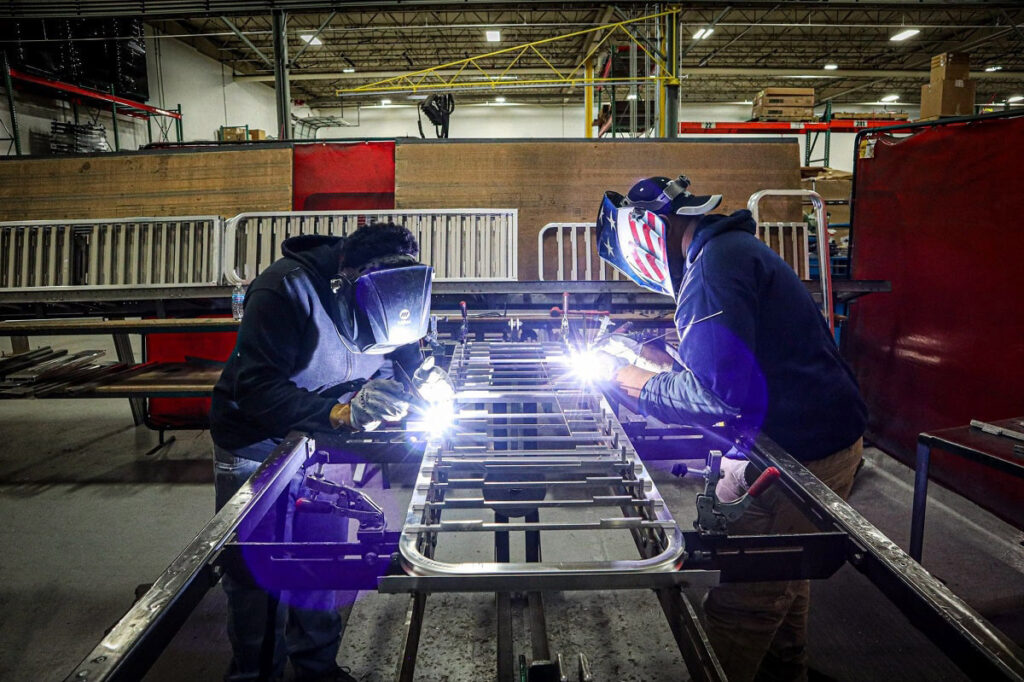
Shielded metal arc welding (SMAW), also referred to as stick welding or manual metal arc welding, is one of the oldest types of welding on the market, dating back to the 1800s. This is a manual arc welding process that is used for both repairs and new production.
Process
Because of its versatility, SMAW can be used in all welding positions on all ferrous materials. During SMAW, a flux-coated electrode helps to form the weld. This happens through a metal stick or rod that sits in an electrode holder that is hooked up to the power source to form the weld.
The flux forms a gas to protect the electric arc, helping to avoid any contamination from atmospheric gasses.
For What Is It Used?
This type of welding is used on a variety of metal types and thicknesses. It can be used in a variety of scenarios, some of which include construction, industrial fabrication, farm machinery, pipelines, underwater welding, maintenance and repair, and more.
Advantages and Disadvantages
Advantages of using SMAW include:
- No atmospheric gas contamination, making it suitable to complete outside.
- The equipment is easy to move and suitable for a variety of environments.
- Despite it being such an old form of welding, its operation is always getting more efficient thanks to advancing technology and improved parts.
While some disadvantages of SMAW include:
- If you aren’t properly trained, it’s easy to make mistakes that impact quality. Common mistakes include cracking, spatter, poor fusion, shallow penetration, weak welds, and porosity.
- Not an automated process, so it is potentially less productive than other types of welding.
- Requires a higher level of skill to use compared to many other types of welding processes.
FCAW – Flux-Cored Arc Welding
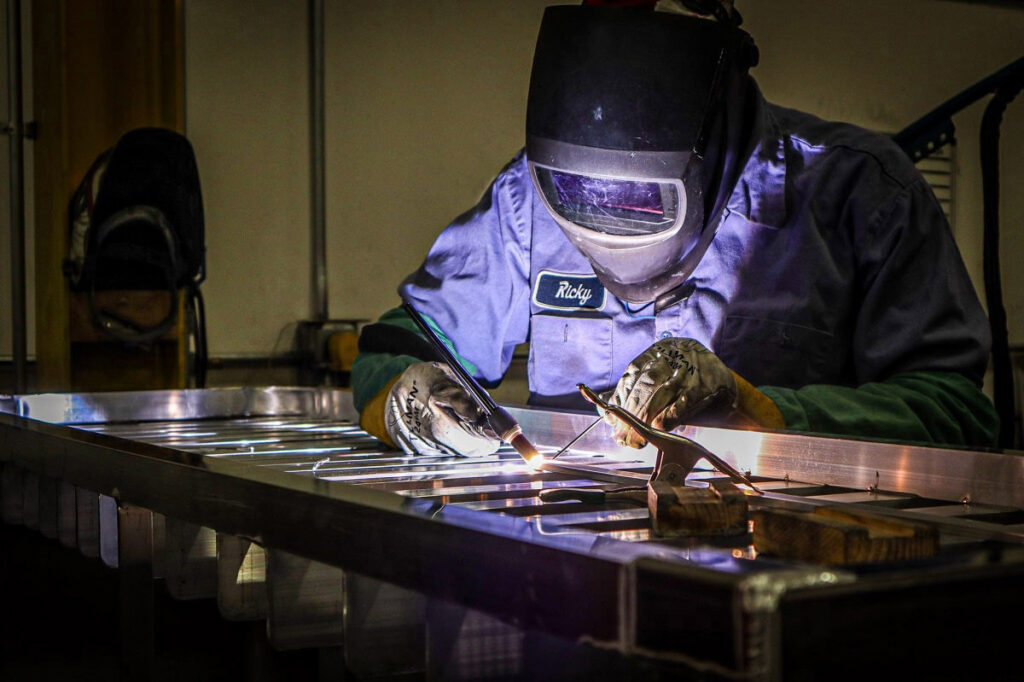
Flux-cored arc welding emerged in the 1950s as an alternative compared to manual metal arc welding or stick welding, as we discussed above. Because FCAW uses a wire-fed electrode, it helps to overcome many of the downsides of other types of welding.
Process
FCAW is a semi-automatic welding process that relies on a wire-fed electrode and a constant voltage welding power supply to be successful. It uses similar equipment to metal active gas (MAG) welding, however, it is more productive than this type of welding.
An electric arc base generates heat to fuse the base metal in the weld joint area. The arc sits in place between the metallic workpiece and the filler wire, melting together to create a strong joint.
The process can be broken down into two sub-processes depending on whether or not an external shielding gas was used. The other type only uses the flux core to keep the weld area protected.
For What Is It Used?
FCAW welding is ideal to use with thick materials such as the majority of carbon steels, cast iron, stainless steel, and surfacing alloys. It’s important to note that exotic non-ferrous materials such as aluminum can’t undergo this welding technique.
It is used only in the down hand or flat position as the current levels are generally high resulting in a very hot weld.
It is often used in processes that require surfacing or hard facing, and its high productivity is suitable for time-sensitive industrial projects.
Flux-cored arc welding is also heavily used in outdoor welding because it doesn’t rely on an external shielding gas. It is often used in the construction industry because so much of this work is completed outdoors. FCAW is also used in jobs such as shipbuilding and water tank repairs.
Advantages and Disadvantages
We’ve compiled some advantages of flux-cored arc welding below:
- The shield gas helps protect the weld pool from oxidation or exposure to other atmospheric elements.
- Results in quality, consistent welds.
- Easier to learn compared to other welding types. This is due to the process being mostly automated
- High welding productivity and impressive weld penetration.
- The filler metal is applied quickly, meaning there’s a high deposition rate.
Some disadvantages to factor in with this type of welding include:
- It creates more spatter compared to other types of welding, such as MIG. Be sure to wear the right protective gear if you’ll be completing this type of welding.
- Creates more slag or spatter compared to other welding types, creating an additional step for the welder after each use. The spatter is excess material that needs to be removed before using the equipment again.
- High level of noxious fumes that need to be ventilated during use.
- Uses more expensive equipment compared to other welding processes.
- The equipment is difficult to move.
PAW – Plasma Arc Welding
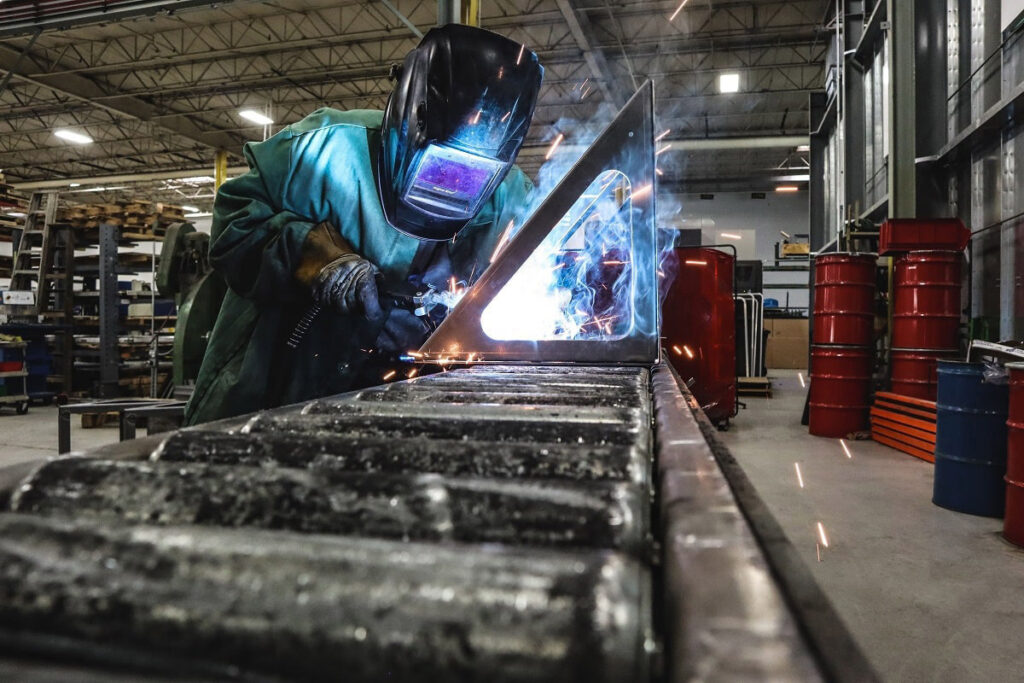
Plasma arc welding (PAW) is similar to TIG welding in the sense that an arс forms between a pointed tungsten electrode and the workpiece. However, there is a difference in PAW welding, as the electrode is positioned within the body of the torch to help separate the plasma arc from the gas envelope.
From there, plasma is forced through a copper nozzle, resulting in a constricted arc.
Process
The power supply needs to be high in this type of welding to generate the spark between the welding plates and the tungsten electrode.
Other equipment required for this type of welding includes:
- Plasma welding torch
- Water recirculator
- Tungsten electrode
- Shielding gas
- Plasma gas
- Torch accessory kit
- Filler material
The bore diameter and the plasma gas flow rate result in three operating modes for this type of welding:
- Microplasma: 01 to 15A. This arc can be used at low welding currents.
- Medium current: 15-200A. Higher currents result in constricted plasma, stiffening the arc. While this higher current also helps increase plasma gas flow, it can increase the risk of shielding gas and air entrainment.
- Keyhole plasma: Over 100A: This welding current results in a powerful plasma beam that can achieve full penetration. It is ideally used for thicker materials.
For What Is It Used?
This type of welding was initially used to weld thin sheets in addition to wire and mesh sections. It is also used in medium-current welding and keyhole welding.
Other applications of PAW welding include the marine and aerospace industries, for welding pipes and tubes out of stainless steel, and in the electronic industry.
Advantages and Disadvantages
Advantages of plasma arc welding include:
- Provides an advanced level of accuracy and control for the welder, resulting in high-quality materials.
- Less weld distortion, high welding speeds, and smaller welds
- The electrode is protected, resulting in less electrode contamination.
- Ideal for making narrow and deep welds.
- More freedom during manual welds due to the torch-to-work distance not being as integral to this type of welding.
Some disadvantages to this type of welding include:
- The equipment is expensive.
- Produces wider welds and heat-affected zones compared to other similar types of welding.
- Produces ultraviolet and infrared radiation.
- A bulky torch that makes manual welding more difficult to master.
- This process is very rare and only used in extremely specialized applications.
SAW – Submerged Arc Welding
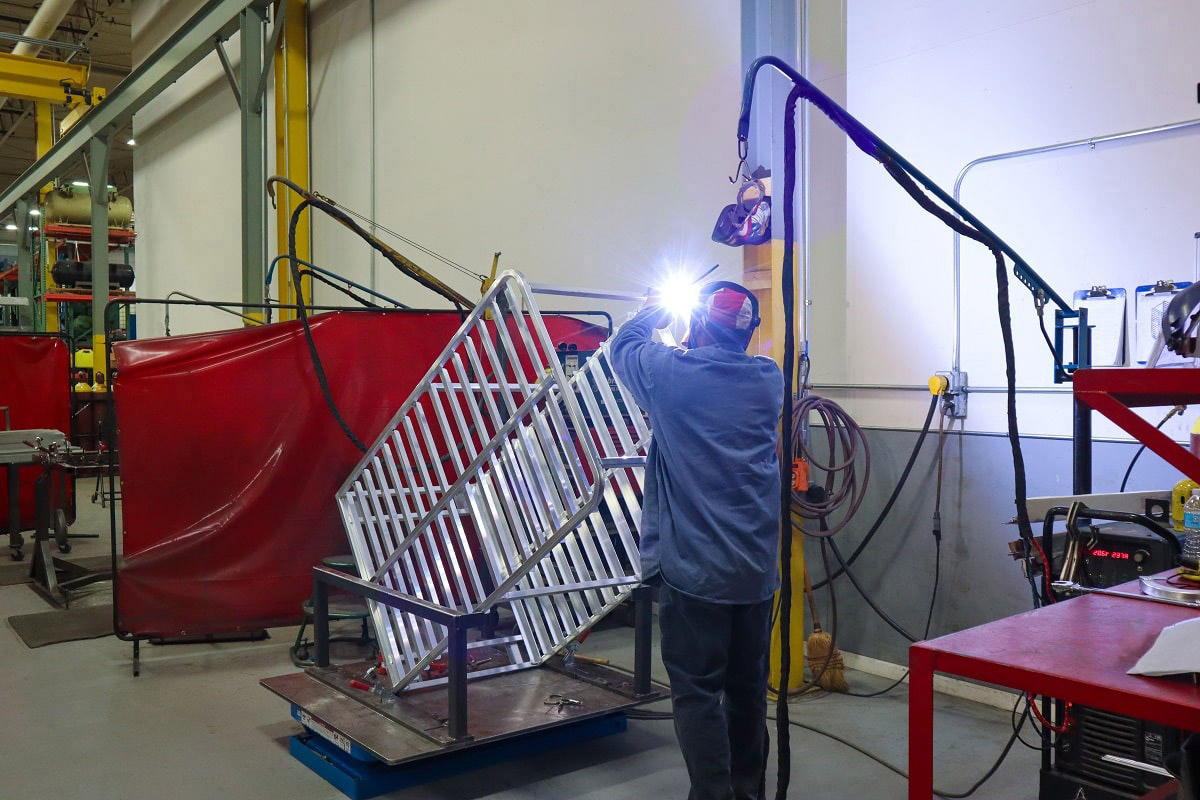
Submerged-arc welding (SAW) joins materials together by heating one or multiple arcs between a bare metal electrode. A blanket of granular fusible material helps to shield the arc, and no pressure is used.
The electrode or a supplementary welding rod helps to obtain the filler material.
Process
Shielding gas is not required for this type of welding, the arc is typically completely submerged under the flux blanket. The process starts with the flux feeding the filler metal onto the joint. From there, steel wool is placed between the joint and the electrode.
As soon as the material is molten, the flux turns into a conductor, and any slag is removed when the process is over.
For What Is It Used?
SAW is heavily used in steel plate fabrication, including welding of structural shapes and longitudinal seams of large diameter pipes. It is also used to manufacture machine components, and it is widely used in shipbuilding.
Advantages and Disadvantages
Some advantages of SAW include:
- Higher deposition and higher operating factors, especially with mechanized jobs
- Easy to control this type of welding.
- Applicable to both thin and thick sheets of metal.
- Can be completed both indoors and outdoors.
- Little fumes are created.
- The arc is covered the entire time, eliminating the risk of splatter
And some disadvantages of SAW welding include:
- The only materials to work on are steel and a handful of nickel-based alloys.
- Limited equipment positions: 1F, 1G, 2F.
- Limited to vessels, rotating pipes, or straight seams.
- The flux can be complicated to set up and cause health concerns for the user.
Other Types of Welding
Other types of welding include atomic hydrogen welding (AHW), electron beam welding (EBW), oxy acetylene welding, spot welding, flash welding, and dozens more! There are all types of welding, each with its unique process and equipment.
Conclusion
If you’re interested in learning more about the different kinds of welding and their applications, we’re happy to help. Our team uses a variety of these techniques to help produce high-quality racks and carts for your business, and we’re always excited to produce something custom for your needs.
Get in touch with us today to get a quote or shop now.